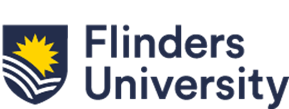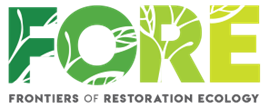Research trip to Flinders University in Australia
- ce2coast
- Apr 22, 2024
- 2 min read
The beginning of 2024 saw the addition of Flinders University to the ALGECO Consortium, and the start of collaboration between our WP4 post-doc, Sheona Innes, and Flinders’ Assoc. Prof. Martin Breed. Sheona recently completed a very successful research trip to Flinders University in Adelaide, South Australia, where she collaborated with Martin’s research group, Frontiers of Restoration Ecology (FORE), to learn bioinformatic analysis bacterial and fungal metabarcoding data. Led by Martin, FORE brings together expertise from a wide range of disciplines to improve ecosystem restoration success through innovation. The team works across several fields and boasts among its successes the integration of genomics into restoration science and the promotion of soil biodiversity management in restoration practices. Find out more about FORE at Flinders here. The group works at the Flinders University campus in Adelaide - a picturesque setting with the main campus buildings surrounding a small lake, lots of trees and a panoramic view of the sea.
Photos from left to right: View from Flinders University campus, Flinders University Lake and surrounding trees (Photos: Sheona Innes)
Being a plant physiologist with expertise in photobiology, bioinformatics is relatively absent on Sheona’s scientific repertoire. But Martin and his team were extremely helpful and inclusive, and the data being analysed shows some very interesting trends. The samples were taken from the experiment performed with lettuce plants in controlled environment growth chambers at NMBU. The lettuce plants were all grown in peat growth medium and were all fertilised with the same mineral fertiliser. Freeze-dried algae grown at Solbergstrand were crushed and included in some of the pots as the “algae” treatment, and biochar made from the same algae were included in other pots as a “biochar” treatment. Samples were taken from the three different growth media treatments, “peat”, “algae”, and “biochar”, at two timepoints, and DNA was isolated from samples from the three treatments, as well as pure peat (no lettuce growth) and pure algae as controls. The DNA underwent amplicon sequencing to analyse bacterial (using the 16S amplicon) and fungal (using the ITS amplicon) composition. The lettuce plants underwent the same measurements as a previous experiment (described in ALGECO website update from 16 Oct 2023) to analyse growth, photosynthesis, transpiration, injury susceptibility, and nutrient content of the plants and soil.
Analysis of the microbial communities of the growth media when either “raw” algae (freeze-dried) or algal biochar is included will provide insight into whether the microbial community is potentially affecting plant growth or physiology. This will inform about the effectiveness of this algae within a circular economy context, where it may have the potential to be utilised both as a means of nutrient removal from wastewater, and as a biostimulant in plant production systems. According to preliminary processing of the microbial data from this experiment, inclusion of algae in the growth media has affected the beta diversity of both bacterial and fungal communities, while the communities are showing differences in alpha diversity between the two sampling timepoints. Data analysis on this is ongoing, and further results will be forthcoming – watch this space!
The collaboration with Martin and the FORE group is highly beneficial for understanding the bioinformatics side of microbial community analysis and the bigger picture of plant-soil interaction.








Commentaires